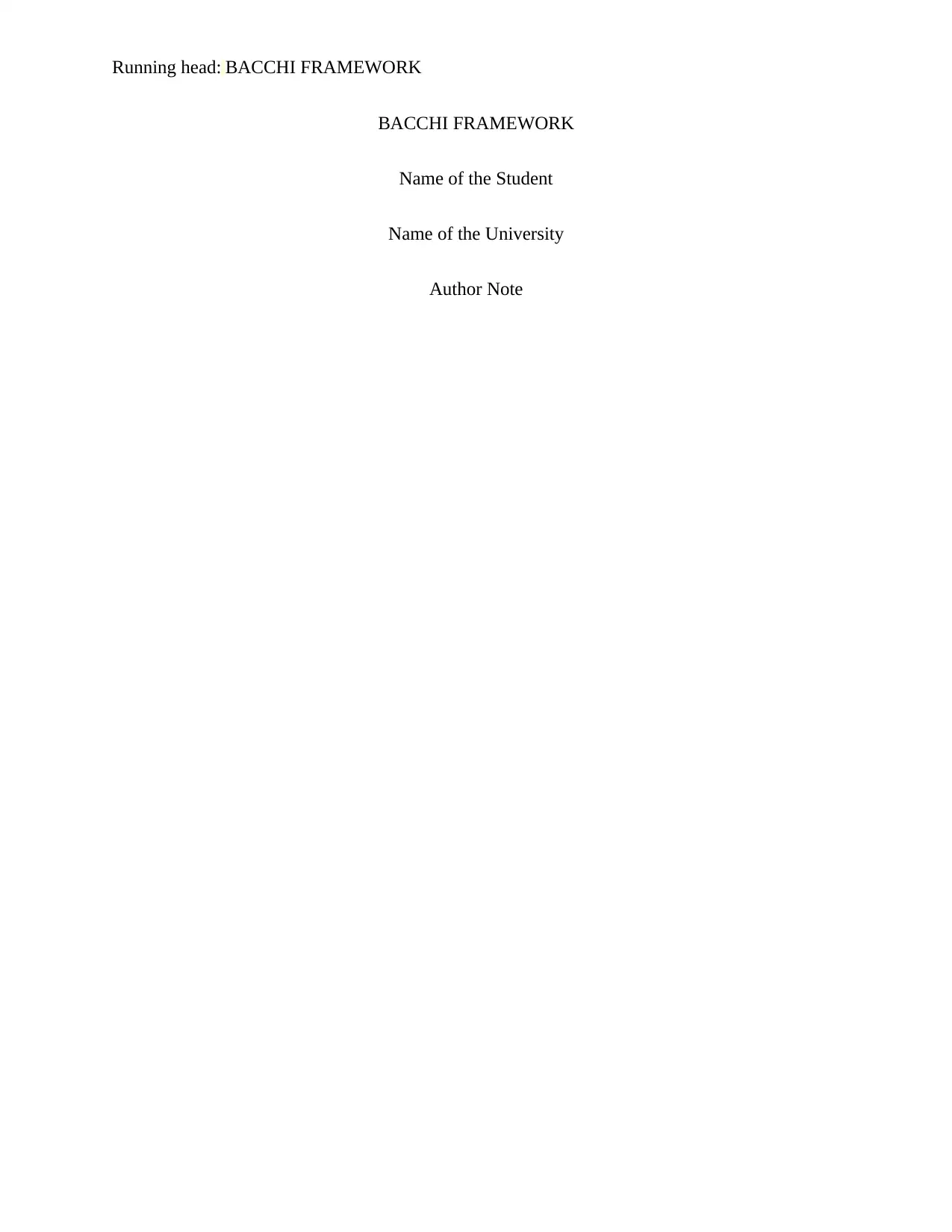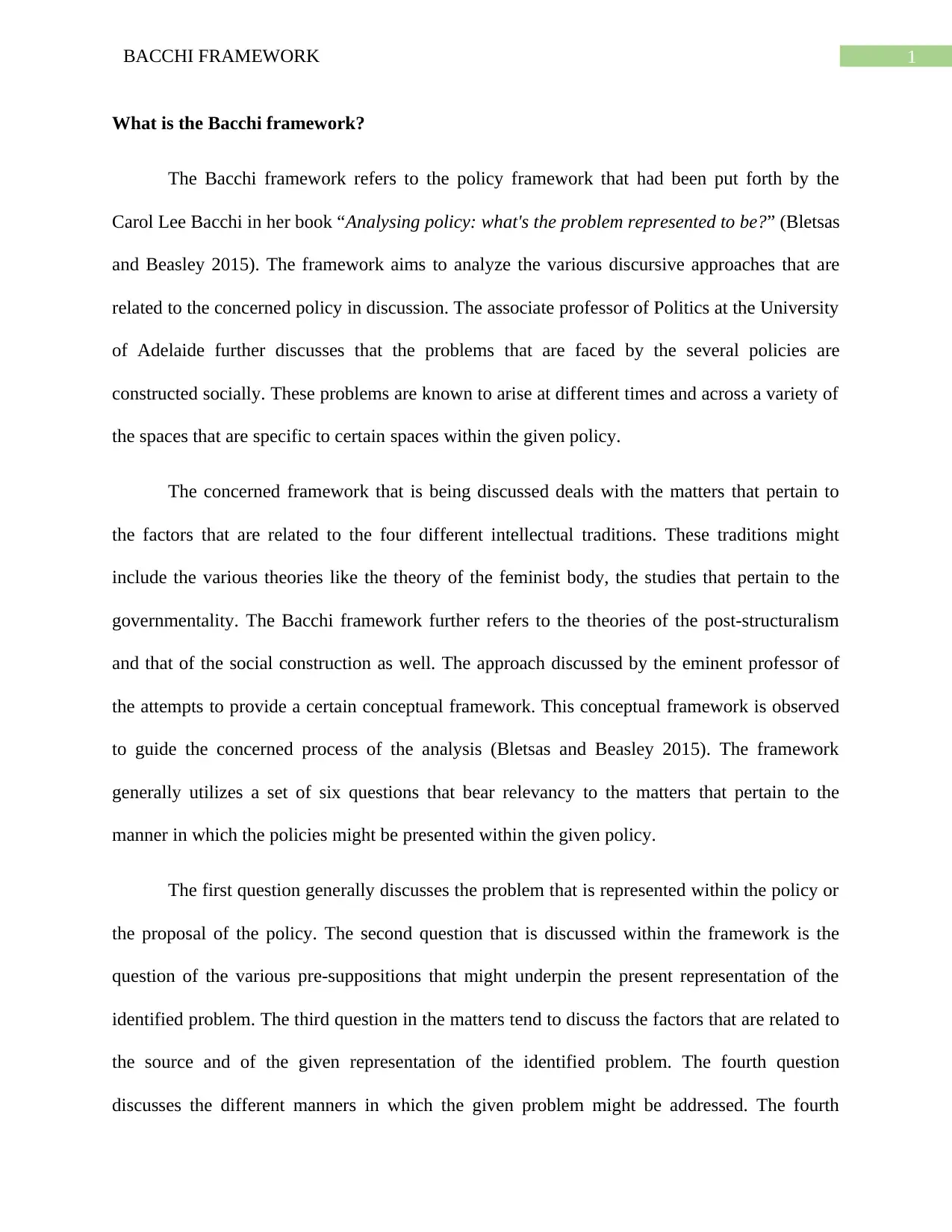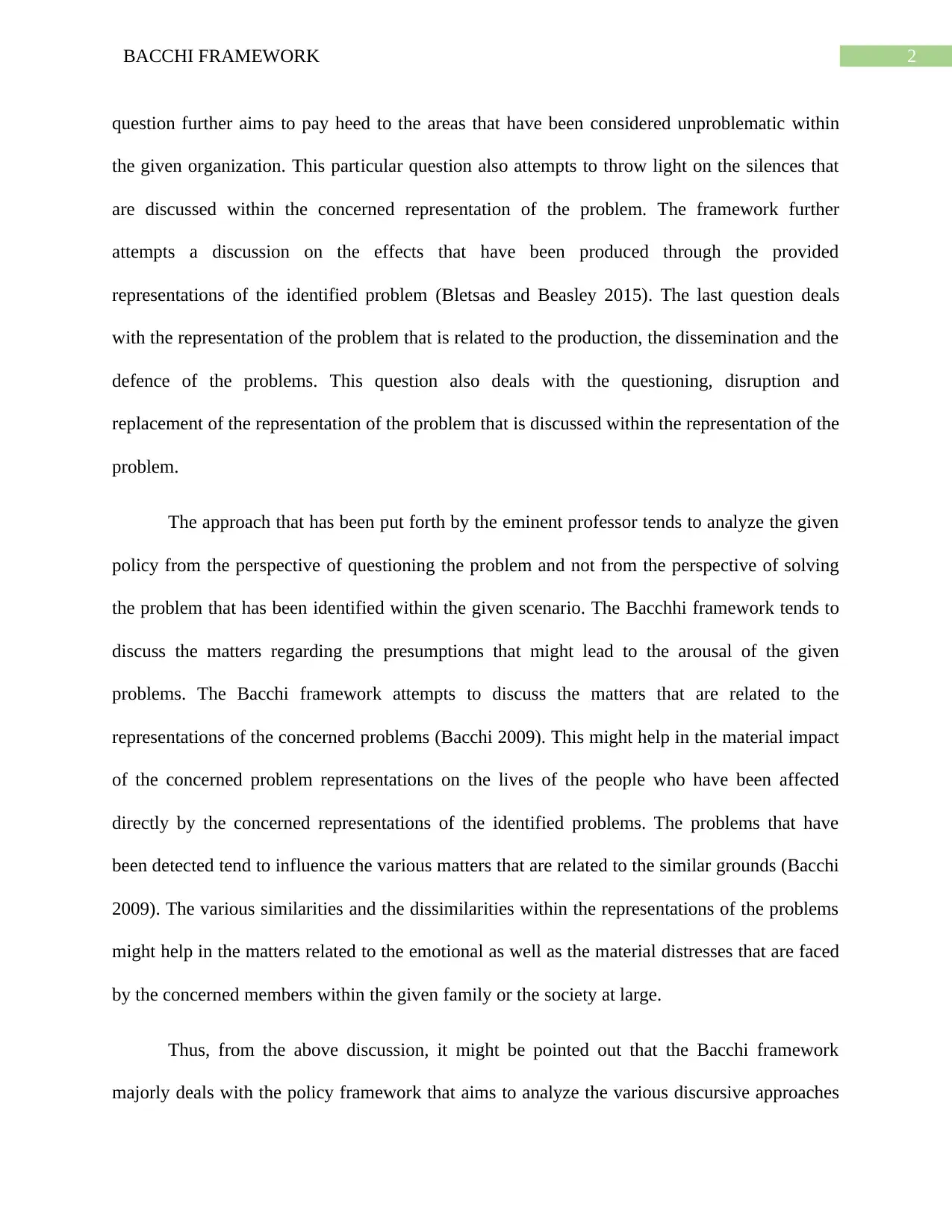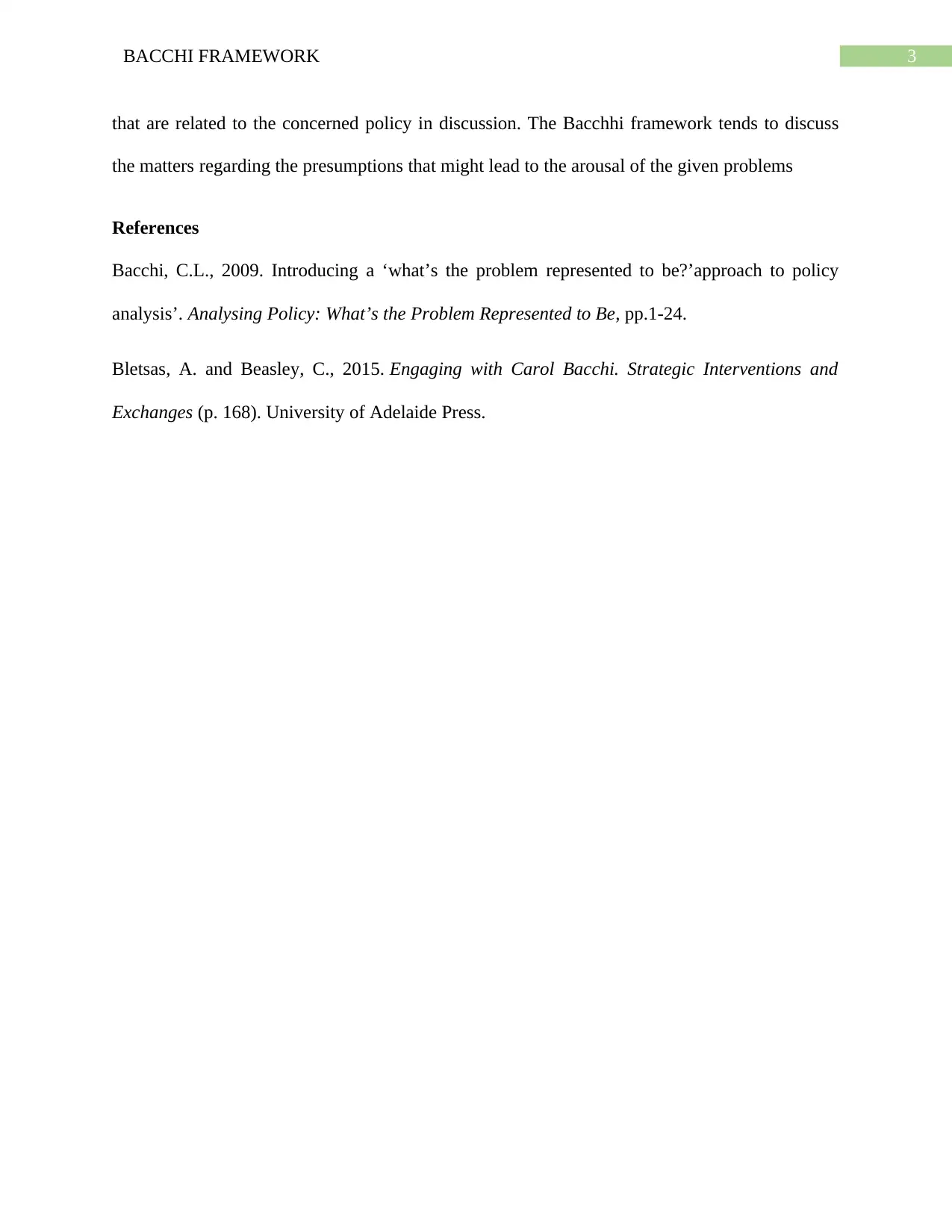In-Depth Analysis of the Bacchi Framework in Policy Studies
VerifiedAdded on 2023/06/05
|4
|814
|222
Essay
AI Summary
This essay provides an overview of the Bacchi framework, a policy analysis tool developed by Carol Lee Bacchi. The framework focuses on analyzing the discursive approaches related to policy by questioning the representation of the problem rather than seeking immediate solutions. It draws from intellectual traditions such as feminist body theory, governmentality studies, post-structuralism, and social constructionism. The framework employs six key questions to examine the problem's representation, underlying presuppositions, sources, potential solutions, unaddressed aspects, and the effects of these representations. By understanding these problem representations, the framework aims to address the material and emotional impacts on affected individuals, offering insights into the similarities and dissimilarities across various problem representations. Desklib provides a platform for students to access similar solved assignments and study resources.
1 out of 4








![[object Object]](/_next/static/media/star-bottom.7253800d.svg)